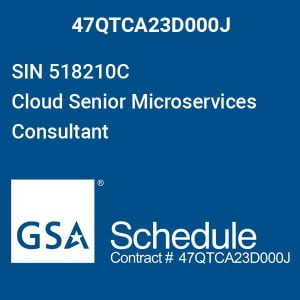In this blog post, we are going to discuss microservices and best practices for building a successful microservice architecture design in detail. Let’s begin by answering the question of what microservices are!
What are microservices?
Microservices are a different form of the service-oriented architecture (SOA) style. They are also popularly known as the microservice architecture. Microservices are a group of small autonomous services communicating with each other, and it has the following characteristics.
- Services are loosely coupled.
- Services can deploy independently.
- Services can be implemented using different technologies.
- Services are decentralized.
- Services are small focused.
Amazon, eBay, Netflix, and Uber are some of the world-famous companies who use the microservice architecture.
Unlock the future of intelligent applications with our cutting-edge Generative AI integration services!
Best Practices for Building a Microservice Architecture
Let’s discuss some of the best practices your organization can follow to build a successful microservice architecture.
Adjusting to the microservices architecture best practices
After working on a monolithic architecture for a long period, shifting to best practices microservice architecture can be very challenging, and it is more likely that you are facing a cultural shift. Therefore, you need to be more flexible. Moving from a monolithic architecture to a microservice architecture will help to solve most of your problems related to software architecture.
Reach the glory of REST APIs
One advantage of using REST (Representational state transfer) APIs (Application Programming Interfaces) in microservices is when creating a REST API, it does not require the developer to install any additional software. It is also crucial to ensure that the changes you made to the APIs are backward compatible.
Use automation
Automation helps to make things simpler and easier. To deploy a large number of microservices, the use of automation is crucial. For example, deploying a system of 1000 microservices without automation will be a tough challenge.
-
 GSA SIN 54151HACS Principal Security Architect$153.15 / Per Hour
GSA SIN 54151HACS Principal Security Architect$153.15 / Per Hour -
 GSA SIN 54151S IT Consultant$81.12 / Per Hour
GSA SIN 54151S IT Consultant$81.12 / Per Hour -
 GSA SIN 518210C Cloud Senior Microservices Consultant$129.41 / Per Hour
GSA SIN 518210C Cloud Senior Microservices Consultant$129.41 / Per Hour
Regular monitoring
It is critical to monitor services regularly. It helps to identify malfunctions at the earliest and to avoid loss and damages that can cause. Further, tools such as Datadog can be used for effective monitoring.
Divide the migration into smaller steps
Migrating from a monolithic architecture to a microservice architecture is not an easy task, especially if you do not have any previous experience. Therefore, dividing the migration process into smaller steps will help to simplify the migration process.
Asynchronous communication
When building best practices microservice architecture, you need to consider how the microservices are going to communicate with each other and exchange data. A microservice can exist alone and involved in fulfilling business requirements. However, a microservice alone cannot fulfill all the business requirements. Therefore, it needs to have proper communication between microservices.
Asynchronous communication helps to achieve loose coupling between microservices. Some of the methods to achieve the asynchronous communication between microservices is via asynchronous REST and via a message queue.
In synchronous communication, failure of one microservice will go down all other microservices. Further, synchronous communication provides tight coupling between microservices. Hence, asynchronous communication is preferred over synchronous communication.
Selecting the Best Technology in Microservices Architecture Best Practices
Microservices can implement different technologies such as using various programming languages, frameworks, databases, and hardware and software environments. However, the use of several programming languages, frameworks, databases, and hardware, and software environments makes it difficult to maintain and also decreases the chance of reusability. Therefore, it is critical to use different technologies for a proper reason. Further, the choice of technologies can be based on personal preferences.
Continuous delivery
Microservice can deploy independently. For example, imagine that you have a system that consists of 100 microservices and you want to change one microservice. Then you can easily change that particular microservice without affecting other microservices.
Ensure high security is best practices microservices architecture
There are lots of ways to ensure a high-security level of microservices.
Use the defense of depth mechanism.
All data is not equally sensitive. The defense of the depth mechanism is a technique that helps to ensure the security of the most sensitive information by applying more security layers to the most sensitive information. So attackers cannot break the security on one go and need to break the security mechanism of all the layers to access sensitive data that is very difficult to do.
Use distributed tracing.
Distributed tracing helps to identify which microservice having the security issue.
Conduct security scans.
Another best practice is conducting periodic security scans help to identify security threats and vulnerabilities.
Use automatic security updates.
Using automatic security updates also helps to identify security issues.
Have a separate database for each microservice for best practices
In a microservice architecture, database sharing is not a good idea. Having a separate database for each microservice helps to keep the data private in each microservice. The data privacy of microservices can be lost if the same database is accessed by more than one microservice, and It also allows coupling between those microservices. Further, if the database is down, it will affect all other microservices which use that database.
Smaller footprint
As the name suggested, the size of the microservices should be small. It helps to build autonomous services within a short time. As the complexity of services increases, services can further break down into services.
Versioning
New features are more likely to be added to the microservices at regular intervals. Therefore versioning is crucial to track the changes made to the microservices.
Small Disadvantaged Business
Small Disadvantaged Business (SDB) provides access to specialized skills and capabilities contributing to improved competitiveness and efficiency.
Final Thoughts for Microservices Architecture Best Practices
We hope this blog post has helped you to understand the best practices for building a successful Microservices Architecture Best Practices!



